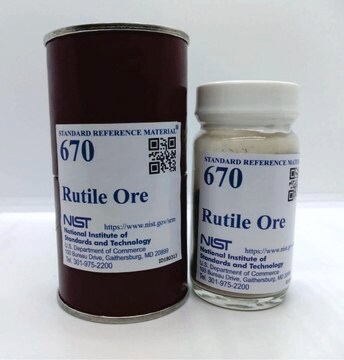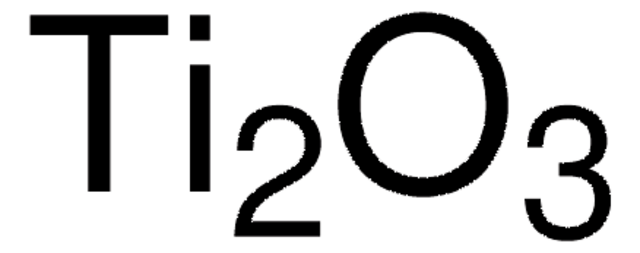635057
Titanium(IV) oxide, rutile
<001>, (single crystal substrate), ≥99.9% trace metals basis, L × W × thickness 10 mm × 10 mm × 0.5 mm
Sinonimo/i:
Titanium dioxide
About This Item
Prodotti consigliati
Grado
optical grade
Descrizione
single side polished
Saggio
≥99.9% trace metals basis
Stato
(single crystal substrate)
(single side polished)
Durezza
7 mohs
Lungh. × largh. × spess.
10 mm × 10 mm × 0.5 mm
Trasmittanza
0.5-4.5 μm
Punto di fusione
1840 °C
Densità
4.17 g/mL at 25 °C (lit.)
4.26 g/mL at 25 °C
Caratteristiche del semiconduttore
<001>
Stringa SMILE
O=[Ti]=O
InChI
1S/2O.Ti
GWEVSGVZZGPLCZ-UHFFFAOYSA-N
Cerchi prodotti simili? Visita Guida al confronto tra prodotti
Caratteristiche e vantaggi
Proprietà fisiche
Stato fisico
Codice della classe di stoccaggio
11 - Combustible Solids
Classe di pericolosità dell'acqua (WGK)
nwg
Punto d’infiammabilità (°F)
Not applicable
Punto d’infiammabilità (°C)
Not applicable
Dispositivi di protezione individuale
Eyeshields, Gloves, type N95 (US)
Scegli una delle versioni più recenti:
Possiedi già questo prodotto?
I documenti relativi ai prodotti acquistati recentemente sono disponibili nell’Archivio dei documenti.
I clienti hanno visto anche
Articoli
A hard disk drive (HDD) is a data storage device that stores digital information by magnetizing nanosized magnets on flat disks and retrieves data by sensing the resulting magnetic field.
Building and Engineering Micro/Nano Architectures of Single-Walled Carbon Nanotubes for Electronic Applications
Spin-based electronic (spintronic) devices offer significant improvement to the limits of conventional charge-based memory and logic devices which suffer from high power usage, leakage current, performance saturation, and device complexity.
Nanomaterials are considered a route to the innovations required for large-scale implementation of renewable energy technologies in society to make our life sustainable.
Il team dei nostri ricercatori vanta grande esperienza in tutte le aree della ricerca quali Life Science, scienza dei materiali, sintesi chimica, cromatografia, discipline analitiche, ecc..
Contatta l'Assistenza Tecnica.


